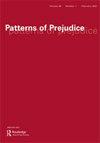2变化的景观和纪念碑拆除热潮,2015-20年
IF 0.8
2区 社会学
Q4 ETHNIC STUDIES
引用次数: 0
摘要
摘要为了应对2020年新冠肺炎疫情期间乔治·弗洛伊德被谋杀的事件,抗议者、政府官员和机构领导人以惊人的速度拆除了美国南部的邦联纪念碑。在将目光投向克里斯托弗·哥伦布、爱德华·科尔斯顿和其他纪念碑后,美国和世界各地都发生了更多的搬迁和搬迁和/或更名承诺。第三波邦联纪念碑拆除热潮迫切需要记录和可视化其范围。格林利用她的纪念碑重建地图项目,提供了美国最近对纪念景观的修订以及全球“黑人的命也是命”的回应的数字、背景和空间理解。从查尔斯顿大屠杀到乔治·弗洛伊德,反黑人暴力已经形成了清除趋势。此外,随着美国240多座纪念碑被拆除,第三阶段(后乔治·弗洛伊德时代)是一个重大的纠正措施,不能轻易忽视,就像全球反种族主义的反应不能被忽视一样。格林认为,需要更多的学术关注,特别是在纪念碑的历史和影响拆除的权力动态方面。由于社区仍在参与修订过程,由此产生的工作对社区和学者都有影响。本文章由计算机程序翻译,如有差异,请以英文原文为准。
2 Shifting landscapes and the monument removal craze, 2015–20
ABSTRACT In response to the 2020 murder of George Floyd amid the global COVID-19 pandemic, protestors, government officials and institutional leaders removed Confederate monuments in the American South at a staggering pace. After extending their gaze to Christopher Columbus, Edward Colston and other monuments, additional removals and promises for removal and/or renaming occurred across the United States and the world. This third wave of the Confederate monument removal craze created an urgency to document and visualize its scope. Drawing on her Monument Removals mapping project, Green provides the numbers, context and spatial understanding of the recent revision to the commemorative landscape in the United States and global Black Lives Matter responses. Anti-black violence has shaped the removal trends from the Charleston Massacre to George Floyd. With over 240 monuments removed in the United States, the third (post-George Floyd) phase, moreover, represents a significant corrective that cannot be easily dismissed, just as the global anti-racist responses cannot be ignored. Green contends that additional scholarly attention is required, especially with regard to the history of monuments and the power dynamics influencing removal. Since communities are still engaged in the revision process, the resulting work has consequence for communities and scholars.
求助全文
通过发布文献求助,成功后即可免费获取论文全文。
去求助
来源期刊

Patterns of Prejudice
Multiple-
CiteScore
2.50
自引率
0.00%
发文量
11
期刊介绍:
Patterns of Prejudice provides a forum for exploring the historical roots and contemporary varieties of social exclusion and the demonization or stigmatisation of the Other. It probes the language and construction of "race", nation, colour, and ethnicity, as well as the linkages between these categories. It encourages discussion of issues at the top of the public policy agenda, such as asylum, immigration, hate crimes and citizenship. As none of these issues are confined to any one region, Patterns of Prejudice maintains a global optic, at the same time as scrutinizing intensely the history and development of intolerance and chauvinism in the United States and Europe, both East and West.
 求助内容:
求助内容: 应助结果提醒方式:
应助结果提醒方式:


